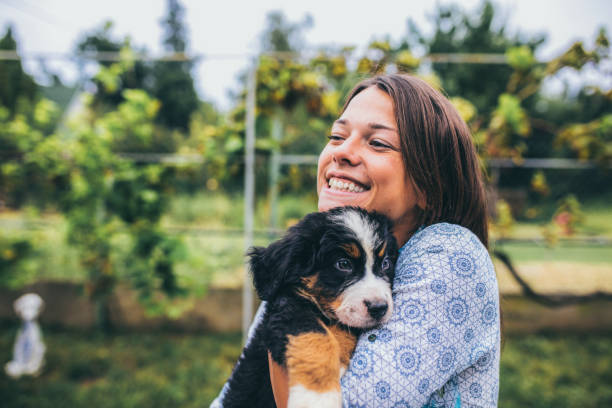Introducing a rescue pet into your home

There’s nothing more exciting than welcoming a rescue pet into your home and providing them with a comfortable, safe and loving surrounding. Not only does welcoming a rescue pet into your home bring them a new lease on life, but it’s also a highly rewarding and fulfilling experience.
However, bringing any new pet into your house comes with responsibilities beyond the standard feeding and walking.
PETstock Dog Trainer, Tina Button, says your home can become a sanctuary for both you and your pet, as long as it’s well thought out and pet friendly.
“Anything that can be chewed, opened or used as a bathroom is a safety hazard for a rescue pet, and not to mention your lovely home,” says Tina.
To help new pet owners or foster carers pet-proof their house in preparation for the new arrival, Tina has provided some helpful tips.
Secure fences and gates
When animals feel anxious or scared, they may try to run away or escape from the backyard, so it’s essential to check all fences and gates at your home to make sure they are secure. This includes securing the ground surrounding fences or gates, ensuring the soil isn’t loose enough to be made into an escape tunnel. Try placing rocks or stones around any exposed areas next to fencing, or even planting chicken wire underneath the surface to prevent holes being dug.
Designate a safe place
It’s important to provide your adopted or foster pet with a designated safe area in your house to retreat to if they feel scared or anxious. This could include the laundry, spare room a section of the garage or a sheltered area in the backyard with bedding, or an enclosed shelter such as a kennel. Having this space will prevent your pet from running away if they get a fright, as they will be more inclined to retreat to their safe place.
Keep bins and food out of reach
Any pet owner knows that pets will sneak food at any given opportunity. While it’s usually harmless, there can be unwanted health consequences and potentially an expensive vet bill to follow. When planning your home around a new pet, ensure your bins are up high, secure and completely out of reach from your pet – one person’s trash is another pet’s treasure after all! This also applies to food storage; where possible store food in cupboards up high to make sure your pet doesn’t get its paws into human-only food.
Door & cupboard latches.
All pets are inquisitive and love to follow their nose, so they’re always likely to open cupboards or doors that they shouldn’t. A way to prepare your house is to install child-proof latches on all doors to ensure the safety of your clever pet and your peace of mind.
Dangerous chemicals
Something often forgotten when bringing a pet into your home are the hazardous chemicals and toxins stored in the home. While cleaning products don’t appeal to us as a beverage of choice, animals can often knock and spill things over which can lead to consequential and dangerous
ingestion of that chemical. To ensure pets and chemicals stay far apart, store all harmful substances in a locked cupboard away from the unpredictable movements of your pet.
Visitors to your home
When bringing home a new pet, it is recommended that you have two to three days of no visitors to your home to allow your pet to settle in.
When you do have visitors, begin with short sessions with only one or two people, so that your pet is not overwhelmed. Of course, all pets are different and respond to new environments differently. Allow the pet to retreat if it feels uncomfortable.
By law, in most states, there is a requirement that all services personnel and trades people must be able to reach your front door without being impeded by animals which have the potential to escape, guard or retreat.
For more information and tools on how to make your adopted or fostered pet’s transition into your home easier, please visit www.petstock.com.au
